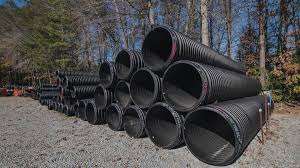Nov . 04, 2024 15:22 Back to list
PVC Pipe Size Specifications and Manufacturing Guidelines for Various Applications
Understanding PVC Pipe Dimensions A Guide for Manufacturers and Users
In the realm of plumbing, construction, and various industrial applications, PVC (Polyvinyl Chloride) pipes have emerged as a popular choice due to their durability, cost-effectiveness, and versatility. Understanding the dimensions and specifications of PVC pipes is crucial for manufacturers, builders, and end-users alike to ensure that the right materials are used for specific applications. This article delves into the essential aspects of PVC pipe dimensions, manufacturing standards, and their application in various industries.
Importance of PVC Pipe Dimensions
PVC pipes are available in varying dimensions, which are primarily defined by the nominal pipe size (NPS) and the schedule (SCH). The NPS refers to the approximate inside diameter of the pipe, which is essential for determining the flow capacity. The schedule indicates the wall thickness, which can affect the pressure ratings and overall strength of the pipe.
For instance, a PVC pipe labeled as NPS 2 (approximately 2 inches in diameter) could come in various schedules like SCH 40 or SCH 80, indicating different wall thicknesses, and thus different pressure ratings. The versatility in sizing allows manufacturers to cater to a wide range of applications, from low-pressure water systems to high-pressure chemical transport.
Standard Dimensions and Specifications
Manufacturing standards for PVC pipes are typically regulated by organizations such as ASTM (American Society for Testing and Materials) and ISO (International Organization for Standardization). These standards provide a framework for the dimensions and properties of pipes to ensure consistency and reliability.
A commonly referenced standard in the United States is ASTM D1785, which outlines the specifications for PVC pipes used in water distribution and other fluid handling systems. According to this standard, PVC pipes come in various nominal sizes, with corresponding outside diameters and wall thicknesses. For example, the common diameters can range from ½ inch to 24 inches and beyond, each designated with specific wall thicknesses suitable for different applications.
Application of PVC Pipe Dimensions
pvc pipe dimensions manufacturer

The dimensions of PVC pipes play a pivotal role in determining their application across various sectors
1. Residential Plumbing In homes, PVC pipes are widely used for drainage, waste, and vent systems. The dimensions chosen are often based on local plumbing codes, where specific pipe sizes and schedules are mandated to ensure proper waste removal and drainage efficiency.
2. Irrigation Systems PVC pipes are extensively utilized in agricultural settings for irrigation. The sizes are chosen based on the flow rates required and the pressure of the water supply, which necessitates a thorough understanding of the dimensions and how they align with the hydraulic requirements of the system.
3. Industrial Applications Many industries rely on PVC pipes for transporting chemicals and wastewater. Here, the dimensional specifications are critical as they must meet the pressure and chemical compatibility requirements. Pipe dimensions must be carefully selected to accommodate the nature of the materials being transported.
4. Construction In construction projects, PVC pipes are often used for plumbing and electrical conduits. The proper dimensions ensure that they fit into the structural requirements of buildings, providing necessary support for utilities.
Conclusion
The dimensions of PVC pipes are fundamental to their performance and utility in a wide array of applications. Manufacturers and contractors must be well-versed in the various standards and specifications governing these pipes to make informed decisions that affect the integrity and efficiency of their projects. As the construction and plumbing industries continue to evolve, a comprehensive understanding of PVC pipe dimensions will undoubtedly remain a crucial aspect of ensuring safety, efficiency, and sustainability in infrastructure development.
Investing time in understanding PVC pipe dimensions not only benefits manufacturers but also enhances the overall success of projects across multiple sectors, reinforcing the importance of proper material selection in achieving long-lasting results.
-
High-Quality PVC Borehole Pipes Durable & Versatile Pipe Solutions
NewsJul.08,2025
-
High-Quality PVC Perforated Pipes for Efficient Drainage Leading Manufacturers & Factories
NewsJul.08,2025
-
High-Quality PVC Borehole Pipes Durable Pipe Solutions by Leading Manufacturer
NewsJul.08,2025
-
High-Quality PVC Borehole Pipes Reliable PVC Pipe Manufacturer Solutions
NewsJul.07,2025
-
High-Quality UPVC Drain Pipes Durable HDPE & Drain Pipe Solutions
NewsJul.07,2025
-
High-Quality Conduit Pipes & HDPE Conduit Fittings Manufacturer Reliable Factory Supply
NewsJul.06,2025

